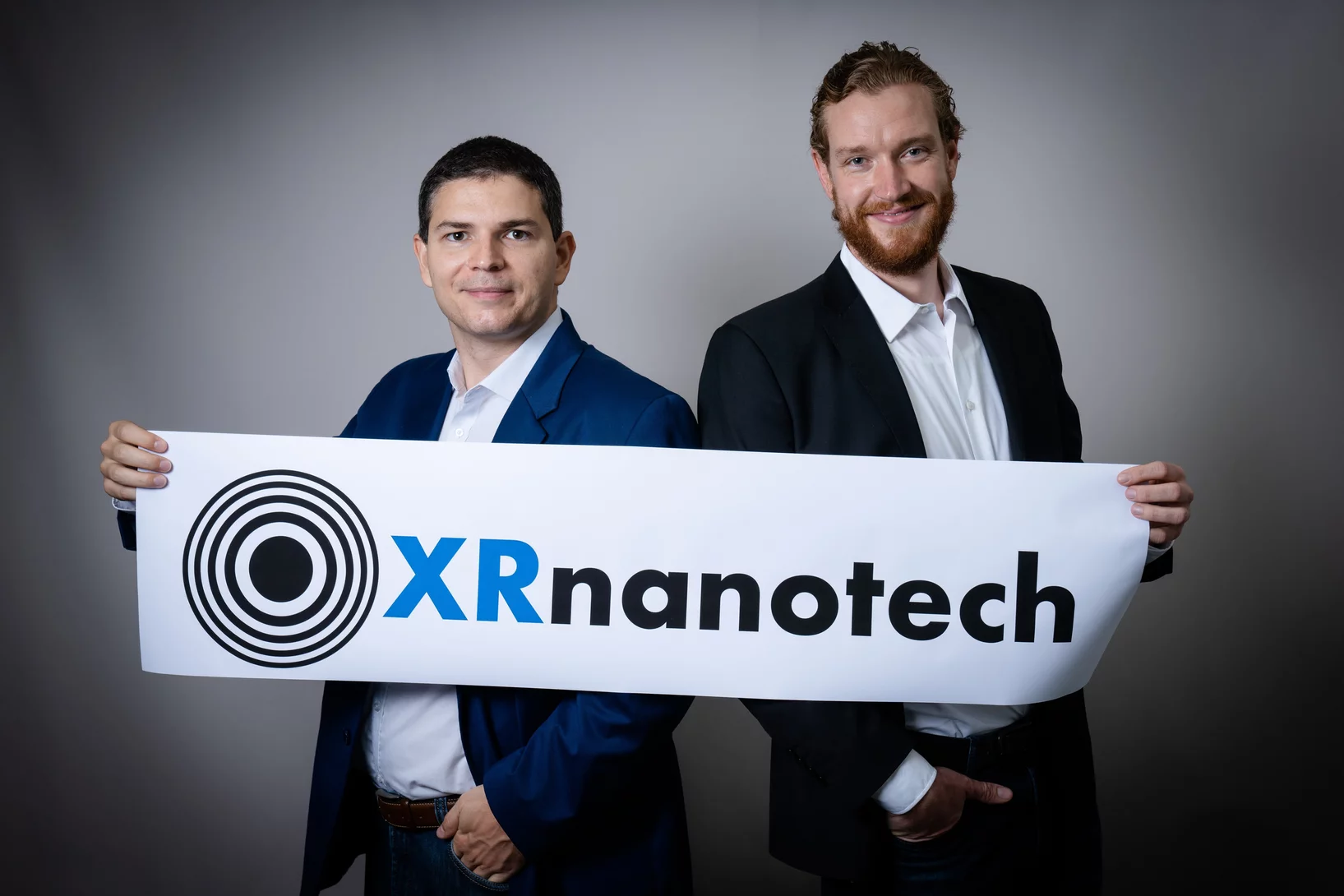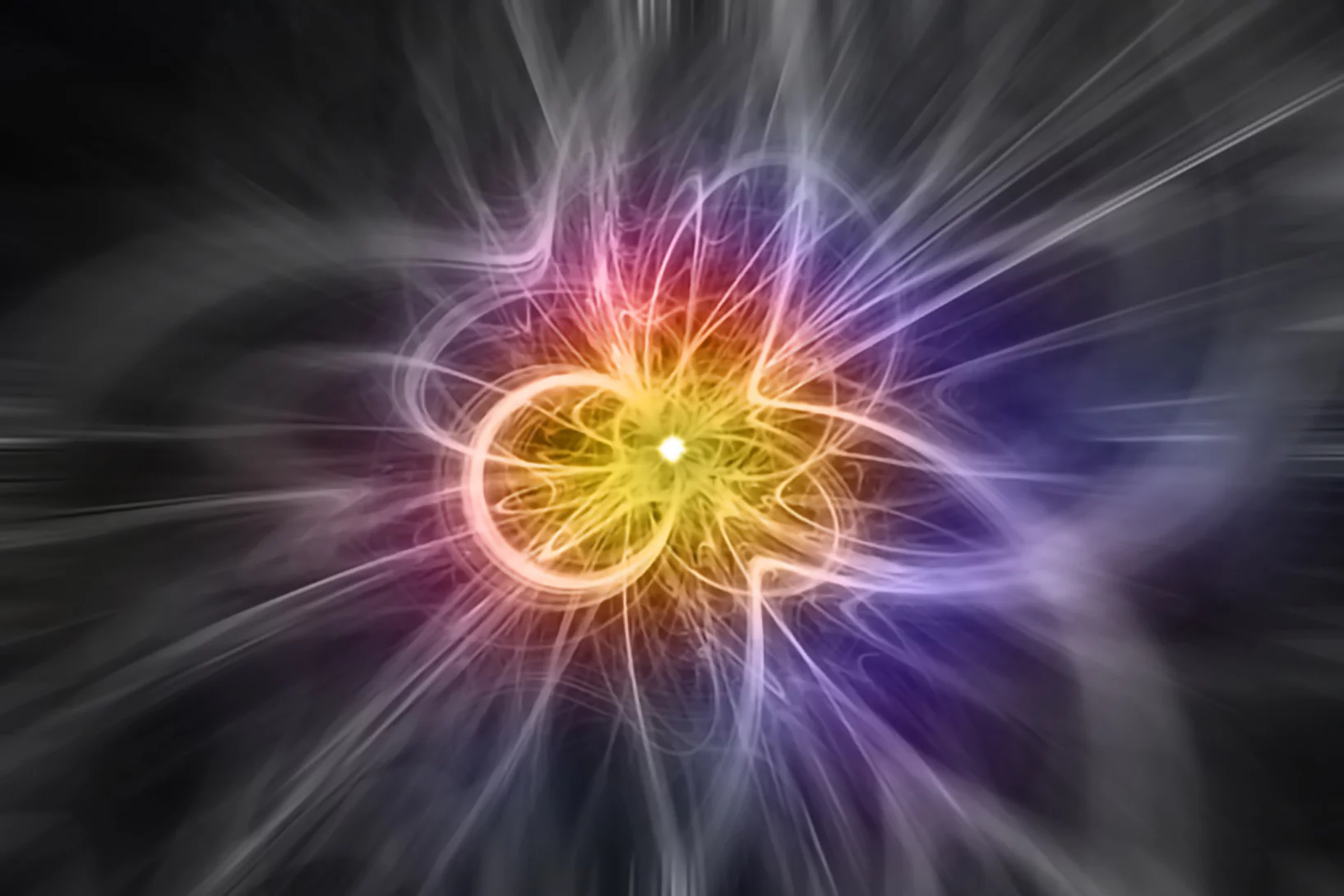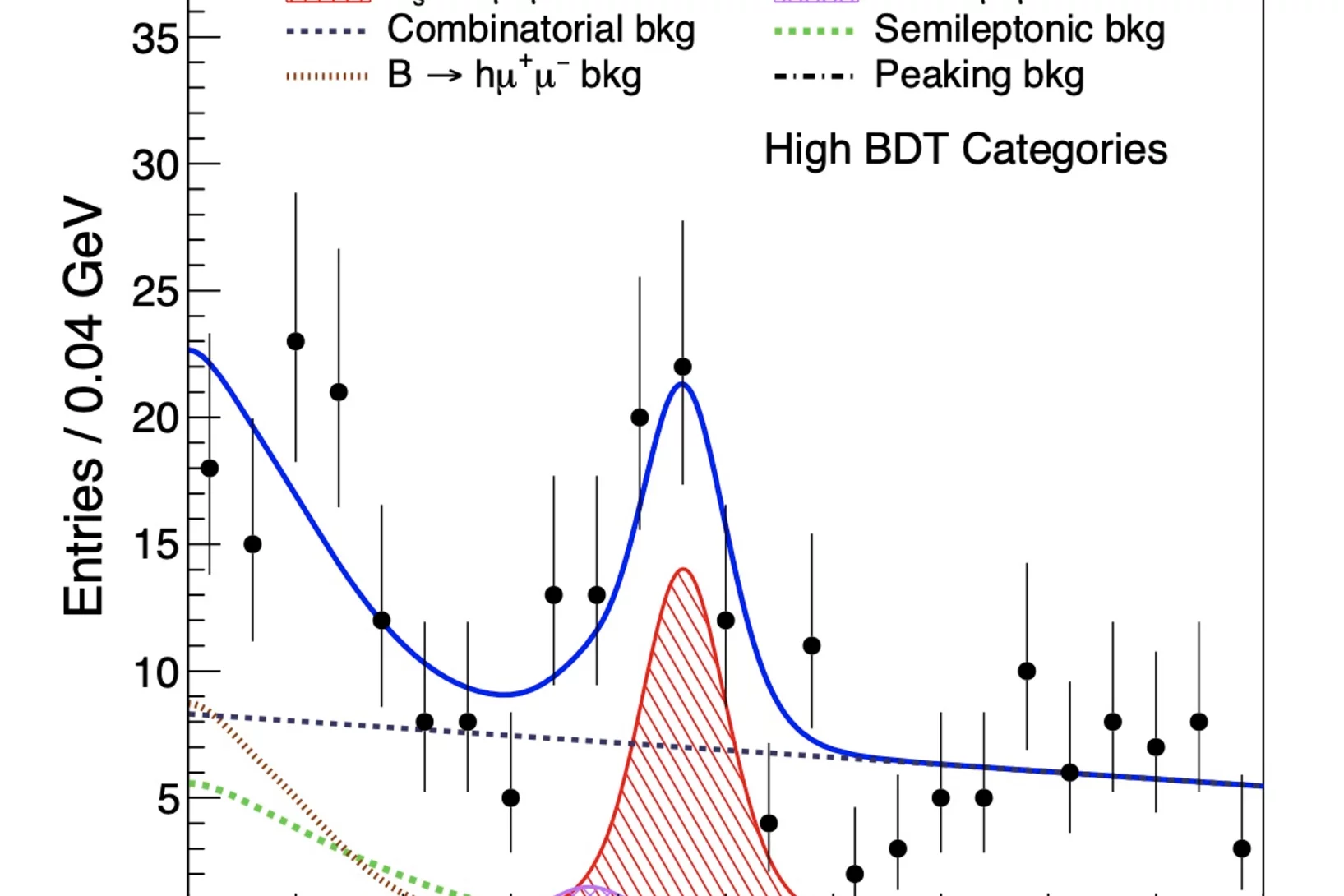Am PSI widmen sich mehrere Projekte wichtigen Forschungsfragen rund um das Coronavirus Sars-CoV-2 und den daraus resultierenden Erkrankungen. Wir informieren über Aktivitäten und Vorhaben, zum Beispiel zu Untersuchungen von Lungengewebe, zur Produktion von Proteinen und Antikörpern oder über Ideen für neue Forschung zu Covid-19.
Nützliche Links
The dynamics of overlayer formation on catalyst nanoparticles and strong metal-support interaction
The editors at Nature Communications have put together an Editors’ Highlights webpage of recent research called “Catalysis” and chose to feature Arik Beck's et al. article, entitled “The dynamics of overlayer formation on catalyst nanoparticles and strong metal-support interaction”.
Berufsberatung.ch
Das offizielle schweizerische Informationsportal der Berufs-, Studien- und Laufbahnberatung. (www.berufsberatung.ch)
Informatik und Mediamatik (ICT) ist einer von vielen Bildungsthemen.
Welche Laufbahnwege gibt es? Welche Berufspositionen können angestrebt werden? Welche Weiterbildungen führen dahin?
Status of SLS and SwissFEL
Please find some relevant updated information on the following topics:
- COVID-19 call continues and is still open in 2022
- SLS 24/7 with external users on site
- We are dedicated to education - Travel and safety considerations for your beamtime
- Remote access
- Current travel information of the Federal Office of Public Health
- Green Light for the SLS 2.0 upgrade
- ATHOS entering pilot operation
Neuer Bauplan für stabilere Quantencomputer
PSI-Forscher haben gezeigt, wie sich schnellere und genauere Quantenbits erschaffen liessen. Die zentralen Elemente sind dabei magnetische Atome aus der Klasse der sogenannten Seltenen Erden, die gezielt in das Kristallgitter eines Materials eingebracht würden.
SLS and SwissFEL Backlog Policy
Both you as users of our facilities and the teams operating the beamlines, and end-stations require planning reliability for conducting challenging experiments. Therefore, we schedule beamtime half a year ahead of time. During a pandemic, re-scheduling can sometimes not be avoided. However, if beamtime has been granted more than a year ago by the PRC, then both the principal investigator and the PRC should re-check if the proposed project is still up-to-date. Therefore, we introduce the 'maximum one chance to reschedule accepted beamtime due to pandemic' policy for all beamtime scheduled from 2021 onwards.
PUBLISHED IN NATURE: A stable low-temperature H2-production catalyst by crowding Pt on α-MoC
Platinum isolated atoms and clusters supported on molybdenum carbide have been extensively characterized. The presence of both species is essential to boost the stability, so that the catalysts displays high metal-normalized turnover number of 4,300,000 moles of hydrogen per mole of platinum
XRnanotech: ein Spin-off startet durch!
XRnanotech, das jüngste Spin-off des PSI, beschäftigt sich mit nanostrukturierten Röntgenoptiken, welche die kleinsten Teile – die Nanowelt – sichtbar machen. Erst vor wenigen Monaten gegründet, kann das Start-up schon zahlreiche Erfolge vorweisen und ist bereits mit ersten Kunden und Investoren im Gespräch.
Magnetically shielded from the rest of the world
The shielding room in which the n2EDM experiment is expected to clarify whether the neutron has a measurable electric dipole moment or not.
(Photo: Paul Scherrer Institute/Markus Fischer)
Sportliche Forschende
Für Wissenschaft und Forschung benötigt man auf jeden Fall Ausdauer, Mut, Kampfgeist und vor allem Neugier. Eigenschaften, die sich auch im Sport bewähren – gleichgültig ob man im Wettkampf antritt oder sich nur für Gesundheit und Wohlbefinden sportlich betätigt.
PSI Thesis Medal 2021 for pioneering Structural Biology at SwissFEL
Dr. Petr Skopintsev received PSI Thesis Medal 2021 for his work on the sodium pump KR2.
New group member
Alexander Steppke officially joins the Quantum Technologies group as project coordinator for the collaboration of the Cristallina-Q team and the Laboratory of Quantum Matter (LQM) of Prof. Johan Chang at the University of Zurich (UZH).
Clocking the movement of electrons inside an atom
Scientists pioneer an approach called self-referenced streaking, clocking Auger electrons with sub-femtosecond resolution. The breakthrough will unlock the broader potential for attosecond time resolution at X-ray free-electron lasers
Magnetisch abgeschirmt vom Rest der Welt
Am Paul Scherrer Institut PSI haben Forschende gemeinsam mit einer Firma einen Raum konstruiert, der einer der am besten magnetisch abgeschirmten Orte auf der Erde ist. Mit seiner Hilfe wollen sie einige der letzten Rätsel der Materie lösen und der Antwort auf eine fundamentale Frage näher kommen: Warum gibt es überhaupt Materie und damit auch uns selbst?
SLS 2.0 approved - TOMCAT 2.0 cleared for takeoff!
In December 2020 the Swiss parliament approved the Swiss Dispatch on Promotion of Education, Research and Innovation (ERI) for 2021 to 2024 which includes funding for the planned SLS 2.0 upgrade. The new machine will lead to significantly increased brightness, thus providing a firm basis for keeping the SLS and its beamlines state-of-the-art for the decades to come. The TOMCAT crew is very excited that the TOMCAT 2.0 plans (deployment of the S- and I-TOMCAT branches, see SLS 2.0 CDR, p. 353ff) have been included in the Phase-I beamline upgrade portfolio. These beamlines will receive first light right after the commissioning of the SLS 2.0 machine around mid 2025. A first milestone towards this goal has just been achieved, with the successful installation of the S-TOMCAT optics hutch during W1 of 2021. The TOMCAT scientific and technical staff would like to thank Mr. Nolte and his Innospec crew for delivering perfectly on schedule.
SLS 2.0 approved - TOMCAT 2.0 cleared for takeoff!
In December 2020 the Swiss parliament approved the Swiss Dispatch on Promotion of Education, Research and Innovation (ERI) for 2021 to 2024 which includes funding for the planned SLS 2.0 upgrade. The new machine will lead to significantly increased brightness, thus providing a firm basis for keeping the SLS and its beamlines state-of-the-art for the decades to come. The TOMCAT crew is very excited that the TOMCAT 2.0 plans (deployment of the S- and I-TOMCAT branches, see SLS 2.0 CDR, p. 353ff) have been included in the Phase-I beamline upgrade portfolio. These beamlines will receive first light right after the commissioning of the SLS 2.0 machine around mid 2025. A first milestone towards this goal has just been achieved, with the successful installation of the S-TOMCAT optics hutch during W1 of 2021. The TOMCAT scientific and technical staff would like to thank Mr. Nolte and his Innospec crew for delivering perfectly on schedule.
Muon rakers bring particles into line
Muons can be created through collisions between protons and nuclei, but need to be controlled in order to be useful.
Cutting the cost of splitting water
Hydrogen can be extracted from water and stored as fuel. But the world needs better catalysts to make this process sustainable and affordable.
Efficient Water Electrolysis at Elevated Temperature using Commercial Cell Components
Decarbonization of the energy system across different sectors using power-to-X concepts relies heavily on the availability of low-cost hydrogen produced from renewable power by water electrolysis. Polymer electrolyte water electrolysis (PEWE) is a promising technology for hydrogen (and oxygen) production for distributed as a well as centralized operation. The total cost of hydrogen is dominated by the electricity cost. Therefore, increase of conversion efficiency is pivotal in improving the commercial viability of electrolytically produced hydrogen. In this study, we investigate the prospects of improving conversion efficiency by reducing the membrane thickness from 200 to 50 micron and increasing the cell temperature from 60 to 120°C.
Ingenieurskunst
Mit Ingenieurskunst ist hier zunächst die Kunst gemeint, Geräte zu entwerfen und herzustellen, die technische Spitzenleistungen möglich machen. Diese Galerie zeigt in fünf Bildern, dass sich dieser Begriff auch anders verstehen lässt, wenn man die Geräte von ihrer eigentlichen Funktion losgelöst als Kunstwerke mit einer ganz eigenen Ästhetik betrachtet.
Interdependent scaling of long-range oxygen and magnetic ordering in nonstoichiometric Nd2NiO4.10
The interplay between oxygen and spin ordering for the low oxygen doped Nd2NiO4.10 has been investigated by single-crystal neutron diffraction. We find a coexistence of the magnetic order below TN with the 3D ordering of excess oxygen atoms, which has not been previously observed for the homologous nickelates. Moreover, the magnetic ordering modulation vectors are no longer independent and exactly follow the modulation vectors of the oxygen ordering.
Results on BS0 →μ+μ- decays with the CMS experiment
Results are reported on BS0 →μ+μ- decays using 61 fb-1 of proton-proton collision data obtained in 2011-2016 with the CMS experiment at the LHC (CERN). In the standard model (SM) of particle physics this decay can be precisely calculated with small theoretical uncertainties, making it an excellent probe for testing the limits of the SM. The branching fraction BF(BS0 →μ+μ-)=(2.9 ± 0.7) x 10-9 is measured with a statistical significance of 5.6 standard deviations. In addition, the effective lifetime of this decay is measured as 𝜏𝜇𝜇=1.70+0.61−0.44
ps. Both results are in good agreement with the SM prediction. In comparison to the previous analysis, a much improved muon identification algorithm significantly increased the purity and strongly reduced the background. As a consequence, the measurement of BF(B0 →μ+μ-) < 3.6 x 10-10 at 95% CL is no longer in tension to the SM, but fully compatible with it.
New group member
Iuliia Bykova officially joins the group X-ray Optics and Applications as Post-Doc. We wish her every success.
X+N call open
The annual call for proposals for both SINQ and for SLS powder diffraction proposals is open! Submission deadline will be February 26th - 04:00 pm (CET)-
Welcome Anthony Boucly
Anthony started working at Paul Scherrer Institute (PSI) in January 2018 as a PostDoc within an internal project shared between the Electrochemistry Laboratory and the Laboratory of Environmental Chemistry at PSI. He worked on 2D LSCO electrodes for the in situ investigation of oxygen evolution reaction and on the interaction of ferryhydrite samples with acidic trace gases. His main expertise is ambient pressure photoelectron spectroscopy and he will work on the in situ investigation of methane oxidation on PtPd size- and composition-selected nanoparticles supported on different oxides.
Welcome Andreas Brenig
Andreas started in January as a PhD student in the van Bokhoven group. Andreas did his master thesis at the Technical University of Munich, TUM, under the supervision of Prof. Johannes Lercher. The title of Andreas’ thesis was “Kinetic modelling and characterization of bifunctional metal-acid catalysts for renewable diesel generation via deoxygenation”.
Geometrical Frustration and Planar Triangular Antiferromagnetism in Quasi-Three-Dimensional Artificial Spin Architecture
We present a realization of highly frustrated planar triangular antiferromagnetism achieved in a quasi-three-dimensional artificial spin system consisting of monodomain Ising-type nanomagnets lithographically arranged onto a deep-etched silicon substrate. We demonstrate how the three-dimensional spin architecture results in the first direct observation of long-range ordered planar triangular antiferromagnetism, in addition to a highly disordered phase with short-range correlations, once competing interactions are perfectly tuned. Our work demonstrates how escaping two-dimensional restrictions can lead to new types of magnetically frustrated metamaterials.
Pulsed Laser Deposition as a Tool for the Development of All Solid-State Microbatteries
All-solid-state lithium ion batteries (LIB) are currently the most promising technology for next generation electrochemical energy storage. Many efforts have been devoted in the past years to improve performance and safety of these devices. Nevertheless, issues regarding chemical and mechanical stability of the different components still hinder substantial improvements. Pulsed laser deposition (PLD) has proved to be an outstanding technique for the deposition of thin films of materials of interest for the fabrication of LIB. Thanks to its versatility and possible fine tuning of the thin film properties, PLD promises to be a very powerful tool for the fabrication of model systems which would allow to study in detail material properties and mechanisms contributing to LIB degradation. Nevertheless, PLD presents difficulties in the deposition of LIB components, mainly due to the presence of elements with large difference of atomic mass in their chemical composition. In this review, we report the main challenges and solution strategies used for the deposition through PLD of complex oxides thin films for LIB.
PSI rüstet die Synchrotron Lichtquelle Schweiz SLS für die Zukunft
Grünes Licht für die SLS 2.0: Das geplante Upgrade der Synchrotron Lichtquelle Schweiz SLS kann stattfinden, die Finanzierung ist im Rahmen der BFI-Botschaft 2021-2024 zugesichert, die Mitte Dezember verabschiedet wurde.
Graphite Anodes with Si as Capacity-Enhancing Electrode Additive
Silicon is a long-standing candidate for replacing graphite as the active material in negative electrodes for Li-ion batteries, due to its significantly higher specific capacity. However, Si suffers from rapid capacity loss, as a result of the large volume expansion and contraction during lithation and de-lithiation. As an alternative to pure Si electrodes, Si could be used as a capacity-enhancing additive to graphite electrodes.
Oliver Wernli aus Remigen erhält den Pestalozzi Stiftepriis 2020
Der Preisträger Oliver Wernli ist einer der besten Konstrukteure EFZ der Schweiz.


























